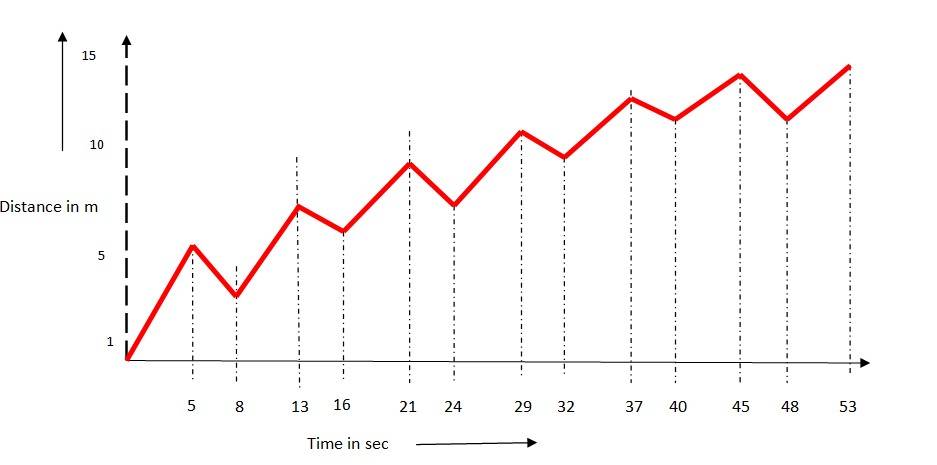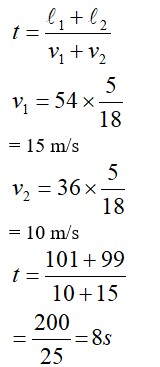3.4 A drunkard walking in a narrow lane takes 5 steps forward and 3 steps backward, followed again by 5 steps forward and 3 steps backward, and so on. Each step is 1m long and requires 1 s. Plot the xt graph of his motion. Determine graphically and otherwise how long the drunkard takes to fall in a pit 13 m away from the start.
3.4 A drunkard walking in a narrow lane takes 5 steps forward and 3 steps backward, followed again by 5 steps forward and 3 steps backward, and so on. Each step is 1m long and requires 1 s. Plot the xt graph of his motion. Determine graphically and otherwise how long the drunkard takes to fall in a pit 13 m away from the start.
-
1 Answer
-
3.4

The time taken for each step is 1s, he covers 5 m in 5 secs and goes backward by 3 m in 3 secs.
So in 8 s he covers 2 m. To cover 13m distance he needs to complete 8 m (13-5). To cover 8m, he will require 8 * 4 = 32 s. To fall in a pit, he needs to move another 5m in 5s.
So total time taken = 32 +5 = 37 s
Let’s have a look at how we came to this answer.
We have to calculate how long it will take for the drunkard to fall into a pit located 13 metres from his starting point.
In each cycle of movement, the drunkard takes 5 steps forward and 3 steps backward. We calculate the net displacement per cycle.
Time for one cycle =
...more
Similar Questions for you
Please find the solution below:
[h] = ML2T-1
[E] = ML2T-2
[V] = ML2T-2C-1
[P] = MLT-1
According to question, we can write
10 =
Average speed
(d) Initial velocity
Final velocity
Change in velocity
Momentum gain is along
Force experienced is along
Force experienced is in North-East direction.
Taking an Exam? Selecting a College?
Get authentic answers from experts, students and alumni that you won't find anywhere else
Sign Up on ShikshaOn Shiksha, get access to
- 66k Colleges
- 1.2k Exams
- 680k Reviews
- 1800k Answers



